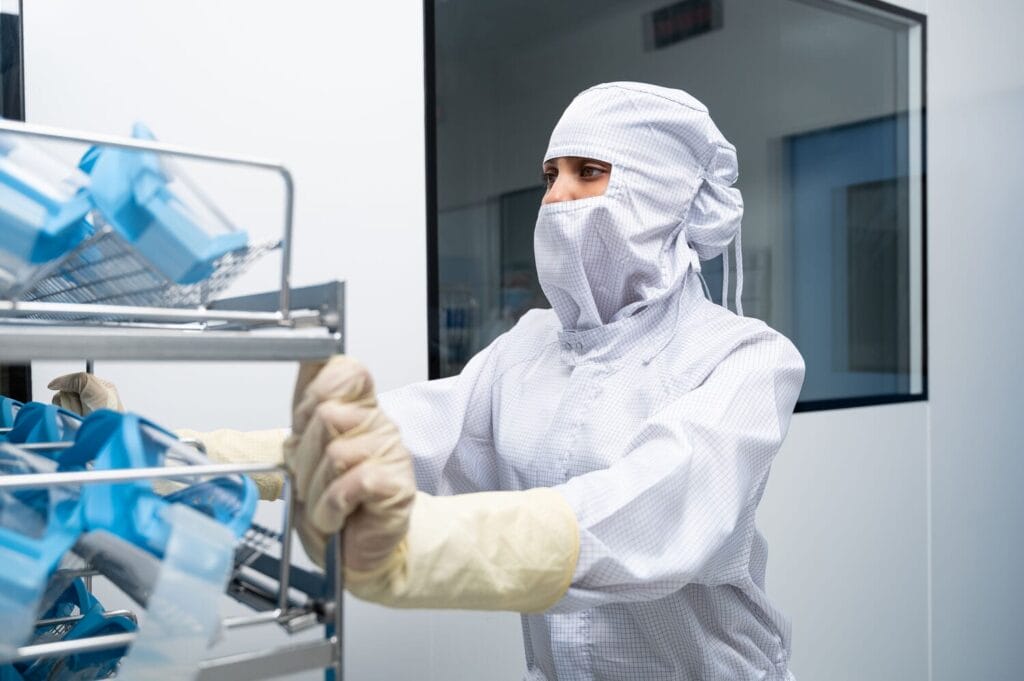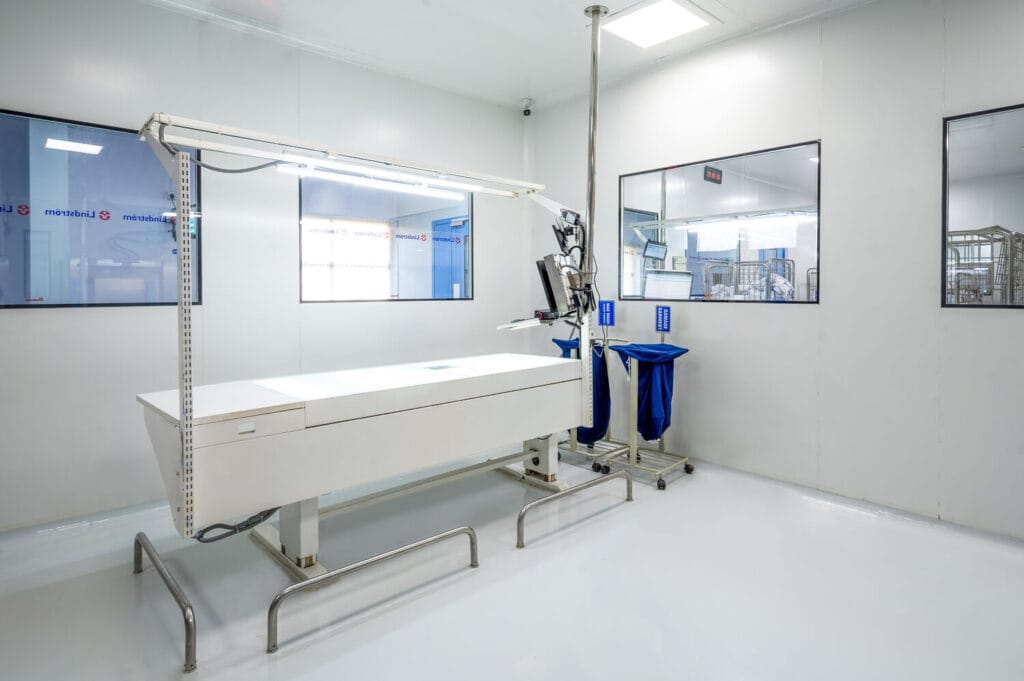
What is the process of effective gowning?
In controlled environments, what seems like a simple task—getting dressed for work—is anything but. The process of effective gowning is a precise and essential routine that protects both the product and the people behind it.
Gowning is the first defence against contamination in a pharmaceutical cleanroom, biotech lab, or healthcare facility. When done right, it plays a critical role in product integrity, regulatory compliance, and workplace safety.
But what does effective gowning actually involve? Let’s break it down.
What are the steps involved in the gowning process?
The process of effective gowning follows a defined sequence designed to minimise contamination. It’s not just about wearing the correct protective garments, but doing so in a way that prevents cross-contamination at every stage.
A Typical Gowning Sequence Includes:
- Preparation
- Remove personal items (jewellery, watches, makeup).
- Perform a thorough hand wash or sanitisation.
- Inspect gowning materials for damage or contamination.
- Donning Garments in the Correct Order
- Shoe covers or designated cleanroom footwear
- Coverall or gown (ensuring proper fit and full closure)
- Hair cover, mask, and beard cover
- Gloves (often double-layered depending on classification)
- Goggles or face shield, if required
- Final Check
- Ensure garments are fully sealed (e.g. cuffs tucked, zippers up).
- Use mirrors or buddy checks to confirm readiness.
- Enter cleanroom through airlocks or gowning zones in unidirectional flow.
Each of these steps ensures particles, microbes, and other contaminants from the human body are contained, preventing them from entering critical environments.
How does the choice of gowning materials impact the process?
The effectiveness of the gowning process depends heavily on the material quality and design of the garments used. Poorly chosen or worn garments can compromise even the most well-followed protocol.
Key garment features that support an effective gowning process include:
- Filtration efficiency to block particulates and microbes
- Durability to withstand repeated laundering without degradation
- Comfort and breathability, which improve wearer compliance
- Antistatic properties, especially in electronics or explosive environments
- Correct fit and coverage, to eliminate exposure points
At Lindström, we provide validated garments tailored to specific cleanroom classifications (ISO 5–8), tested for their protective performance and comfort. Because we manage the full lifecycle—laundering, inspection, and replacement—you always receive garments in compliance-ready condition.
What are common mistakes to avoid during gowning?
Even experienced teams can fall into bad habits. Here are a few common pitfalls to watch for:
| Mistake | Why it matters |
|---|---|
| Skipping hand hygiene | Transfers skin flora into sterile areas |
| Donning garments out of sequence | Increases risk of contaminating clean items |
| Reusing disposable garments | Inconsistent barrier protection |
| Using damaged or expired garments | Reduced filtration and protection |
| Not monitoring gown condition | Leads to use beyond validated lifecycle |
The process of effective gowning is about consistency. Small errors, repeated daily, can lead to big contamination events.
How does effective gowning influence workplace safety?
Cleanroom garments protect the product and are essential for worker safety. In pharmaceutical and biotech environments, gowning helps prevent exposure to potent compounds, biohazards, or allergens.
At the same time, when gowning processes are followed consistently, product quality improves, and regulatory compliance becomes easier. This dual protection of people and products is what makes gowning so valuable.
What role does training play in ensuring effective gowning?
A gowning protocol is only as effective as the people following it. That’s why training is critical.
Effective training should:
- Explain the why behind each step
- Include live demonstrations and hands-on practice
- Cover contamination risks and behavioural dos and don’ts
- Be refreshed regularly to address drift and new standards
Lindström partners with customers to train personnel in proper gowning techniques, often as part of cleanroom service onboarding. We also help conduct audits and observations to identify where routines may be slipping, and then we support you in correcting them.
Are there any technological advancements improving the gowning process?
The process of effective gowning is evolving with smart tools that reduce error and increase visibility.
Here’s how technology is making a difference:
- RFID-tracked garments provide traceability and control over lifecycle limits
- eLindström offers real-time inventory insights, helping avoid garment shortages
- Digital audits and alerts help monitor compliance in gowning zones
- Validated laundry processes ensure every garment meets biocontamination standards (EN 14065)
By integrating these systems, organisations can focus less on gowning logistics—and more on production excellence.
How can Lindström aid in optimizing the gowning process?
From garment design to cleanroom laundry, Lindström’s service helps you with effective gowning:
- Providing garments that meet ISO and GMP standards
- Ensuring each garment is cleaned, tested, and traceable
- Offering modular laundry solutions close to your facility
- Supporting audits with lifecycle and quality documentation
- Training your staff in best practices for contamination control
The way of gowning is a powerful way to control contamination, protect your workforce, and maintain the integrity of your products. With the right garments, proper training, and a dependable service partner, maintaining gowning compliance becomes easier, more consistent, and worry-free.




